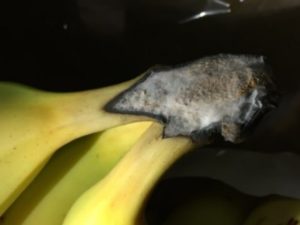Guide to crown end rot identification
Thielaviopsis musarum (commonly known as Chalara).
- Rot extends beyond the crown and into the fruit (rapid development).
- Usually limited to a few clusters.
- Occurs randomly and mostly reported during winter and spring.

Fusarium equiseti-incarnatum species complex.
- Gives a fuzzy/fluffy appearance on cut crown surface.
- Usually causing cosmetic damage but incidence is often reported as high.
- Reported to be worse during summer/spring.

Musicillium theobromae
- Appearance not as fuzzy/fluffy as the above organism.
- High incidence reported.
- Reported to be worse during summer/spring.

Colletotrichum musae
- Limited fungal growth apparent and sometimes orange spore masses are observed.
- Rot can extend below the crown.
- Low incidence reported.

Please note...
The above information is a guide only, as multiple organisms may be involved and simultaneously cause symptoms.
If you notice any crown end rot symptoms or want further information, contact the better bananas team at betterbananas@daf.qld.gov.au or 13 25 23.
This work is funded as part of the Cause and management of crown rot of banana project (BA13011). This project is funded by Hort Innovation, using the banana research and development levy, co-investment from the Queensland Department of Agriculture and Fisheries and contributions from the Australian Government. Hort Innovation is the grower-owned, not-for-profit research and development corporation for Australian horticulture.


